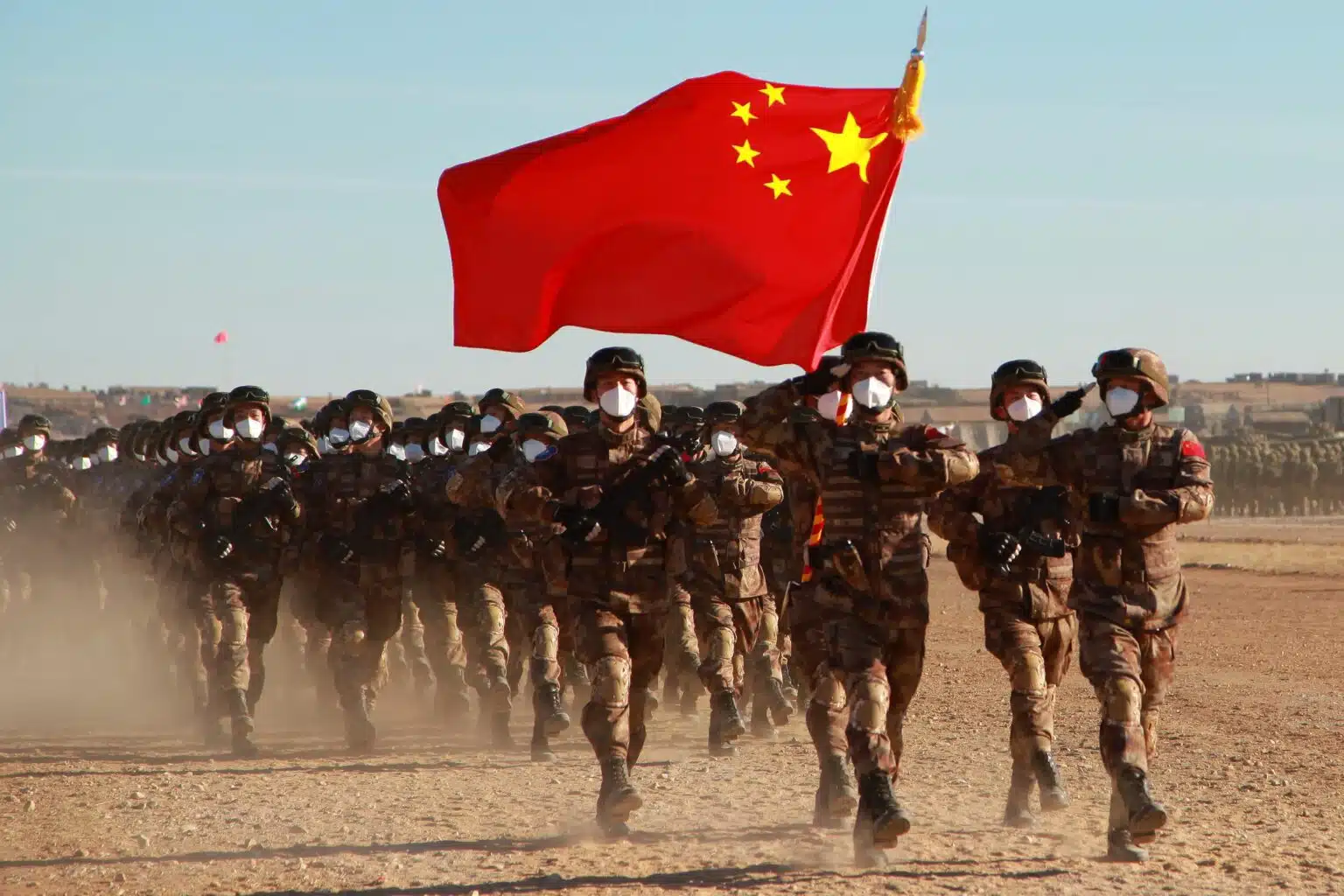Military drills have been staged by China around Taiwan following the meeting of Taiwanese President Tsai Ing-wen and US House Speaker Kevin McCarthy.
Military drills lasted up to three days without any missiles being fired near the island of Taiwan. This move comes after the unsanctioned meeting of Taiwan’s president Tsai Ing-wen and US House Speaker Kevin McCarthy. Comparing this response to the one when former Speaker Nancy Pelosi visited Taiwan last August—which was much harsher—Beijing has dialled down the harshness. This is predicted to be due to the upcoming elections in Taiwan, where victory by the opposition Kuomintang (KMT) party is in China’s best interests.

China’s standard operational procedure now includes military drills after Nancy Pelosi’s visit, according to Professor Chen-shen Yen of Taiwan’s National Chengchi University. Making their position known without having an overreaction is the aim.
History of conflict
The civil war that ended in 1949 with the defeat of the KMT by the Chinese Communist Party forced the KMT to flee to Taiwan. In recent times, the two rivals have found common ground based on the 1992 consensus of the “One China” policy. This consensus contained a vaguely worded understanding of the “One China” policy, which includes Taiwan.
Beijing stands to be the best campaigner for the Democratic Progressive Party (DPP) in the elections, which lean towards an independent Taiwan if the hard-line rhetoric of Beijing continues, said Professor Chen-shen Yen. Despite the KMT having big wins in the local elections last year, analysts estimate that the China factor has more sway in the presidential elections.

Speaking from Taiwan’s Soochow University, Professor Fang-yu Chen said that China has adopted a carrot and stick strategy. There are conflicting scenarios presented by China: on the one hand, there is the possibility of increased cultural and economic exchanges if Taiwan agrees to the “One China” principle, and on the other hand, China continues to build up its military. The idea of war or peace prevailing is presented by China. There will be peace if votes are in favour of the KMT, but war will prevail if they are in favour of the DPP.
Uneasy balance
There is an uneasy balance to be maintained between China and Taiwan. China also faces internal pressures with regards to Taiwan to maintain a strong stand. This is especially due to the rising nationalist sentiments among Chinese citizens. Some measure of success has been achieved if China’s aim was to deter closeness between US and Taiwanese officials, as Taiwan appears to have taken steps to reduce tensions around the Tsai-McCarthy meeting.

The issue of Taiwan has been the biggest flashpoint in US-China relations, with both countries having highly opposite views about Taiwan. China believes it to be a part of its territory and has not ruled out the thought of taking over the island by force. The US shows greater support for Taiwan despite the diplomatic acknowledgement of the “One China” policy.
USA’s promise of intervention
The United States President, Joe Biden, has promised to intervene in support of Taiwan if there is an attack by China. This statement contradicts the posture of ambiguity officially put forth by the US. Starting on Tuesday, the US will carry out its biggest ever joint military exercise with the Philippines as a part of recapitalizing its forces in Asia. This is also in light of the US securing access to four military bases in the Philippines in the South China Sea, which are relatively close to Taiwan.

The Taiwanese population has maintained its calmness during both military drills by China, but there are worries about the island being lulled into a false sense of security. “China might continue with future drills and possibly attack, and if it does, Taiwan won’t know how to respond,” said professor Yen.
There have been recent escalations along the median line, which is the unofficial divide between China and Taiwan. Beijing’s warplanes and ships are seen to be crossing this mutually respected border of seventy years.












